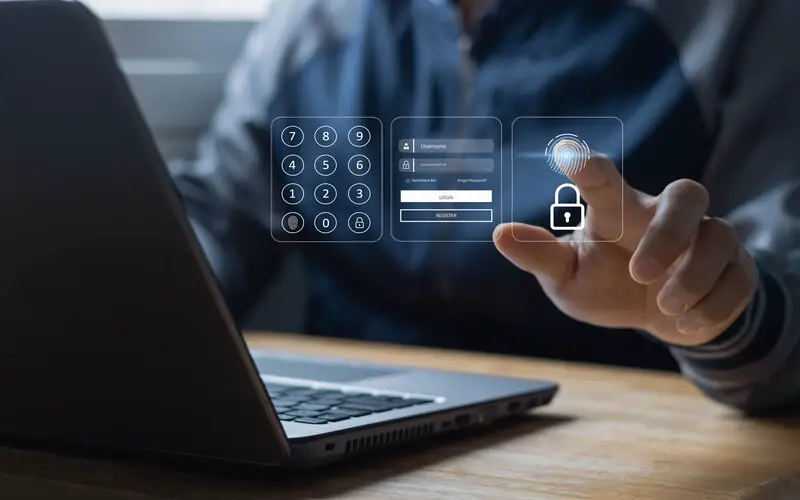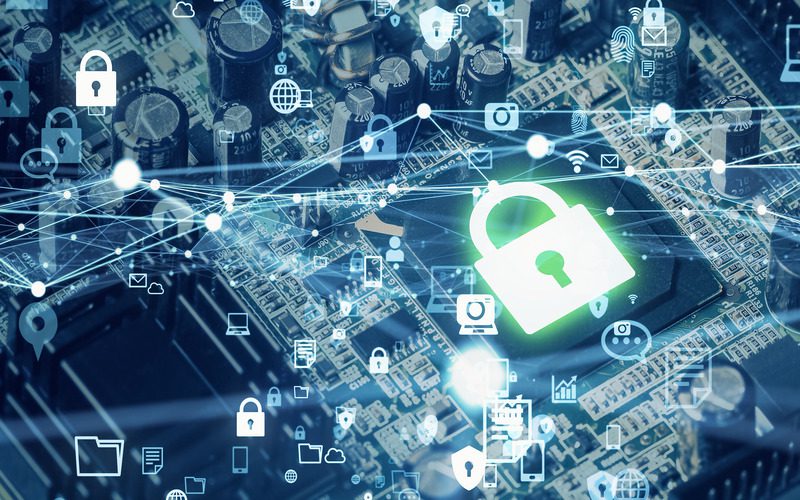Endpoint protection, also known as endpoint security, involves the use of advanced security tools and processes to secure various endpoints like servers, workstations and mobile devices that connect to a corporate network. The goal of endpoint protection is to prevent cybercriminals from stealing or altering valuable company data and applications, or from hijacking the business network, all of which can grind operations to a halt. According to IBM, the average total cost of a data breach reached $4.24 million in 2021 — the highest it’s been in seven years.
The endpoint protection tools of today combine the features of antivirus (AV) and antimalware (AM) tools with the capabilities of new-age technologies like automation, cloud computing and remote monitoring, to provide comprehensive network and endpoint security.
In this blog, we’ll shed light on why endpoint security is an essential businesses requirement, especially in current times when cyberattacks are rampant and catastrophic. We’ll also talk about the benefits of endpoint protection, discuss how it works and delve into the features of a good endpoint protection solution and more. Read on.
What is endpoint protection?
Endpoints can serve as doorways for cybercriminals to gain access to a company’s network. As companies grow and connect more devices to their network, the risk of a cyberattack also increases proportionally. That’s why businesses should monitor all their endpoints for anomalies and suspicious behavior in order to contain threats before they snowball into a disaster and disrupt business activities.
Thankfully, businesses can purchase sophisticated integrated security tools that can remotely monitor execution processes and log files on various endpoints, analyze variances and remediate incidents automatically. These tools are commonly known as Endpoint Protection Platforms (EPP) that combine the functionalities of various security products like antivirus and antimalware solutions, firewalls, antispyware and intrusion prevention systems into a single package. The global endpoint security market is projected to continue to grow to over $19 billion in 2025.
Furthermore, to make it easier for companies to manage multiple security components from one place, EPP platforms come equipped with vulnerability and patch management, configuration management, disk and encryption facilities, and backup and disaster recovery features to name a few. By providing comprehensive endpoint protection, a good EPP solution not only prevents malware, worms, trojans and other intrusive software from making their way into endpoints, but also helps maintain a high level of endpoint health and functionality.
What is an example of an endpoint?
Endpoints are devices that are connected to a corporate network and can communicate with it and other endpoints on that network. Endpoints include, but are not limited to, laptops, desktops, servers, workstations, tablets, smartphones, IOT devices, network switches, modems, routers, printers, POS systems and BYOD devices.
Why is endpoint protection important?
With remote work now more common and companies increasingly adopting hybrid work models, endpoints are no longer restricted to on-site locations. Employees are connecting to company servers using a variety of networks (Wi-Fi, 4G) and from various remote locations. Endpoints have become more vulnerable to cybercrime in recent years and cybercriminals have exploited vulnerabilities in them to execute malicious code and launch attacks. According to an IBM report, the average total cost of a data breach was over $1 million higher in remote-work-related incidents as compared to incidents where remote working was not a factor.
Criminals target endpoints to:
• Use them as entry and exit points to a company’s network
• Access information stored on the endpoints
• Launch DDoS attacks that overload the servers, causing businesses to halt for hours
As the security perimeter becomes more fluid, companies require greater visibility and control over their endpoints. They require tools that will allow them to monitor, oversee and secure even off-premises endpoints. Furthermore, endpoint protection is as important for small and medium-sized businesses (SMBs) as it is for large corporations. Cybercriminals often exploit the fact that SMBs don’t consider themselves attractive cyberattack targets and hence do not implement adequate security measures, leaving their endpoints vulnerable and unprotected.
According to the Verizon 2021 Data Breach Investigations report, small organizations accounted for less than half the number of breaches as compared to large organizations in 2020. However, in 2021, the gap between the two dwindled with large organizations experiencing 307 breaches compared to 263 for small organizations. In addition, where large organizations detected breaches within “days or less” in over half the cases (55%), small organizations didn’t fare as well at 47%. Any company, no matter its size or industry, should prioritize endpoint protection.
Cybercriminals can take advantage of an unsecured endpoint to break into a network and steal confidential information. In addition to theft, threat actors can engage in corporate espionage and cyber extortion as well as a number of other criminal activities that could adversely affect business operations and brand reputation.
What are the benefits of endpoint protection?
An endpoint protection tool has several advantages that are crucial for ensuring business continuity. Companies can benefit from endpoint protection in the following ways:
Unified security management: The modern endpoint protection system does away with traditional, siloed security systems where endpoints are managed separately. In addition to being time-consuming, the old process created significant security gaps that were difficult to identify. A modern endpoint security tool allows sysadmins to manage hundreds of endpoints from a single interface. With a greater understanding of the endpoints and network map, security weaknesses can be identified quickly and addressed in less time.
Protection against key threat vectors: There are a variety of attack vectors that cybercriminals use to deliver malicious payloads into a victim’s system. Compromised credentials, phishing emails and inadequate or missing encryption are examples of attack vectors. An endpoint protection tool is effective at identifying and neutralizing a number of attack vectors.
Simplified security management: With the power of automation, endpoint protection tools can perform a variety of security tasks without requiring human intervention. Endpoint protection tools enable technicians to provision, register, manage, update and retire hundreds of endpoints at the click of a button. Not only does this make the entire security process far more efficient with a greater success rate, it also frees up the IT experts to focus on high-value, business-critical tasks.
Better business resilience: To stay competitive, businesses must implement stringent security measures, especially as workforces become more dispersed, work environments get more varied and cybercrime increases at an unprecedented rate. Cyberattacks are unavoidable. The right endpoint protection tools can help protect your data, and digital forensics incident response capabilities can also help you retrieve affected data quickly.
Business reputation: According to the Ponemon Institute, a data breach costs an average of $3.92 million. Nevertheless, the damage a breach can cause to your business or reputation is far greater. In the wake of a data breach, 60% of companies fail or go out of business.
In the current economic climate, customers and clients prefer to do business with companies that have effective security measures in place and are compliant with government-issued cybersecurity guidelines. The use of an endpoint protection tool is no longer an option but rather a necessity.
How does endpoint protection work?
A company’s security requirements vary depending on its business. An endpoint protection tool can enable companies to leverage policy settings to achieve the required level of security. For example, IT administrators can use endpoint protection tools to block access to sites that are home to malware or other malicious content. Moreover, in the event of a cyberattack, for example, when an employee downloads a malicious file from a phishing email, an endpoint solution quickly identifies the infected endpoint and isolates it from the rest of the network while attempting to resolve the issue.
With the rapid adoption of digitalization, the game-changer will be cloud-based endpoint management solutions that continuously monitor, protect and prevent threats on each endpoint. The latest behavioral heuristics features analyze files and executables, stopping threats proactively and predictively in real time. Therefore, next-generation solutions are significantly more effective at protecting endpoints than the more traditional, reactive endpoint management solutions.
Endpoint protection vs. antivirus programs
Antivirus programs use signature-based threat detection and prevention features to keep malware, such as viruses, spyware, bots and Trojans, from gaining access to a company’s network. A signature is any type of pattern or footprint left by a malicious attack. AV tools match these signatures with out-of-the-ordinary behavior such as unauthorized software execution, network access, directory access or the byte sequence of a file. The next step is neutralizing the attack if the signatures match.
The companies that make AV tools keep updating their signature databases so their solution can provide protection against a wide range of threats. However, technological advancements have made cyberattacks signatureless and fileless. This is where AV solutions fail, and endpoint protection solutions step in to save the day. An endpoint management solution essentially combines antivirus safety features along with other security functions such as sandboxing, data loss prevention, next-generation firewalls and enhanced data recovery.
Endpoint protection vs. endpoint detection and response (EDR)
EDR is the successor to EPP and AV security software. Compared to EPP, EDR takes security procedures a step further with its data analysis and forensic capabilities.
EDR tools identify and respond to cyberthreats before they occur or while they are in progress. In addition, it can detect malware with polymorphic codes that can go undetected by traditional security tools. The goal of an EDR solution is to identify active and potential security threats that aren’t detected by traditional antivirus tools, such as zero-day attacks and fileless malware attacks, and respond quickly to them.
EDRs also come with machine learning and built-in analytics tools that can identify and neutralize a threat in the early stages of an attack. This feature powers EDRs to study the behaviors of new and emerging threats and prepare for them in advance.
What should I look for in endpoint protection?
It can be confusing to know which endpoint solution to choose once you step out into the market. A reliable endpoint solution should operate in the background without interfering with your organization’s daily activities. Some features you should look for when shopping for an endpoint solution are the following
Choose the right solution for your business
Cloud-based solutions are modern and great for businesses that want to scale and expand quickly. These solutions are flexible to use and great for remote and hybrid environments. Alternatively, on-premises solutions are ideal for companies in finance, government, healthcare and other critical sectors to meet stringent privacy and regulatory requirements. It’s also possible to combine the two to get the best results.
High-risk prevention rates
Your endpoint detection tools should have next-generation malware detection capabilities, so cyberattacks can be detected and blocked at the point of entry. Furthermore, prevention capabilities analyze the risks your endpoints are most vulnerable to and take stringent measures to prevent them. After all, prevention is better than cure.
High-risk detection rates
There are sophisticated cyberattacks that can evade even the next-generation tools we use each day. You can verify the detection rate of your endpoint protection solution by looking at real-world tests conducted by reputable companies. Several vendors also offer malware samples for testing the detection capabilities of your endpoint security tool.
Quick detection time
Detection time is just as important as detection capabilities. A good endpoint protection system should detect breaches and incidents quickly. A delay in this step could mean irreparable damage to your IT infrastructure, databases and applications, translating to loss of revenue and reputation.
Low false positive rates
A false positive occurs when a security system raises an alert for a file that isn’t malicious. This means that the file must be investigated and studied, which will require resources. Choosing a product that keeps reporting false positives will force you to lose time tracking down nonexistent threats and possibly reinstalling and restoring systems that don’t need it at all. It’ll also lead to alert fatigue and a loss of faith in the solution.
Automation
Organizations with no security automation experienced breach costs of $6.71 million on average in 2021 vs $2.90 million on average at organizations with fully deployed security automation according to the Cost of Data Breach Report by IBM. Automation is on everyone’s mind. This technology handles several tasks that were previously done manually, making the job easier and more error-free, while saving companies a great deal of money. Automation capabilities in endpoint protection will allow administrators to automate a variety of security tasks, giving technicians more time to concentrate on business-critical tasks.
Sandboxing functionalities
This technique identifies and separates suspicious files from the environment and analyzes them in a quarantined environment. Essentially, sandboxing is akin to putting malicious files behind bars and preventing them from contaminating an IT network or infrastructure at large.
Round-the-clock monitoring capabilities
Endpoint detection solutions should provide the same level of security 24/7 since cyberattacks are unpredictable and can happen at any time.
User friendly interface
Modern endpoint solutions offer a centralized user interface that lets IT technicians manage everything from a single screen. Having said that, if the user interface of the solution is full of challenges and glitches, then it hinders the management of endpoints and consequently compromises security.
Is endpoint protection alone enough?
Many companies presume having an endpoint protection solution is sufficient. In reality, this solution meets only one aspect of your security setup. An organization must also put in place a variety of other security tools, solutions and processes to ensure complete security. A company should have data backup and recovery tools, email scanning tools to prevent phishing and even cybersecurity training sessions to prevent risks that can sometimes arise from employee error.
Here are some steps you can take to ensure IT infrastructure security:
• Conduct regular IT assessments
• Create, enforce and update security policies periodically
• Enforce a strong password policy
• Enforce strong policies around data backup
• Have a comprehensive BYOD policy
• Update your systems regularly
• Have an effective email security solution
Protect your endpoints with Kaseya
To simplify IT infrastructure management, companies need a remote management and monitoring (RMM) tool that can help them run IT administration and security tasks from the same interface.
Kaseya VSA is a unified remote monitoring and management (uRMM) platform that enables IT teams manage core IT security functions from a single console. VSA brings together a host of services, like software patch management (including OS and third-party patching), AV/AM deployment and management, and backup and disaster recovery management (servers and SaaS app data), so you can provide comprehensive protection to all your endpoints using a single platform. In addition, VSA lets you patch off-network devices even over low-bandwidth networks — an indispensable feature when securing work-from-home (WFH) employees’ computers.
By providing comprehensive security to your systems and networks with Kaseya VSA, you can protect them against ongoing cyberthreats. By integrating an RMM tool into your business, you can boost growth, protect your business and safeguard your clients.
Want to learn more? Schedule a demo of Kaseya VSA today!





